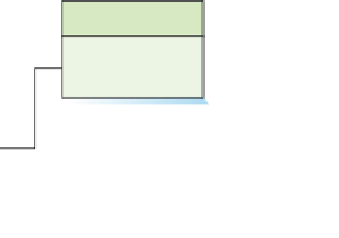Database Reference
In-Depth Information
As shown in Figure 6-13, association entities sometimes connect more than two entity
types. Figure 6-13(a) shows the association relationship among the CLIENT, ARCHITECT,
and PROJECT entities from the data model we created in Figure 5-23. When there are several
participants in the association, the strategy just shown is simply extended. The associa-
tion table will have the key of each of its parents, as shown in Figure 6-13(b). In this case, the
ASSIGNMENT table has three foreign keys and one nonkey attribute, HoursWorked.
In both of these examples, it is only coincidence that the association tables have only
one nonkey attribute. In general, an association table can have as many nonkey attributes as
necessary to meet user requirements.
CLIENT
ARCHITECT
Figure 6-13
Transformation of
ID-Dependent Entities in an
Association Relationship
Among Three Entities
ClientName
ArchitectName
Email
Phone
Office
Email
ASSIGNMENT
ClientName
ArchitectName
ProjectName
HoursWorked
PROJECT
ProjectName
StartDate
Budget
(a)
Association Pattern Data Model from Figure 5-23
CLIENT
ARCHITECT
ClientName
ArchitectName
Email
Phone
Office
Email
ASSIGNMENT
ClientName (FK)
ArchitectName (FK)
ProjectName (FK)
HoursWorked
PROJECT
ProjectName
StartDate
Budget
(b)
Association Pattern Database Design












































Search WWH ::

Custom Search